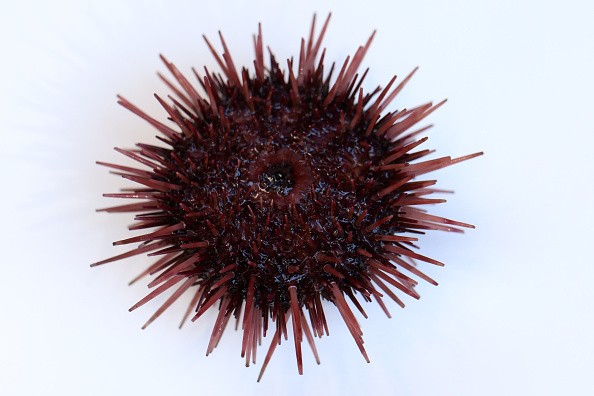New information on the origins and early development of echinoids, which include sea urchins, sand dollars, and their cousins, was published today in the journal eLife.
According to the study, contemporary echinoids appeared some 300 million years ago, overcame the Permo Triassic catastrophic event, the most severe biodiversity crisis in Earth's history, and swiftly diversified in its aftermath.
These research results help to address a lack of information due to the relative lack of archeological remains for these early synergies.
Different genomes of sea urchins

There are around 1,000 extant species of echinoids, which include sea urchins, heart urchins, sand dollars, and sea biscuits.
They thrive in a variety of ocean settings, from shallow seas to abysses. The hard spine-covered skeletons of these life forms have left an amazing number of fossil records throughout history.
Despite this extraordinary fossil record, their origin is recorded by just a few fossil species with ambiguous relationships to current groups, leaving their early history enigmatic.
According to first author Nicolás Mongiardino Koch, who accomplished the work while at Yale University in New Haven, Connecticut, and is now a postdoctoral fellow at Scripps Institution of Oceanography at UC San Diego, "There are still discussions between many scientists about this when the predecessors of echinoids arose and also what role the mass extinction event that took place in between Permian and Triassic periods may have got to play in their evolvement," as per ScienceDaily.
They set out to contribute to the resolution of these controversies by integrating genomic and paleontological data to unravel their genetic links.
The exceptional fossil evidence of echinoids, as well as the ease with which these fossils can be integrated into genetic analysis, make them an ideal system for investigating their early evolution using this method.
Their findings indicate that the descendants of the original echinoids most likely appeared during the Early Permian period and speedily diversification during the Triassic period in the aftereffects of a cataclysmic event, despite the fact that this evolutionary radiation does not appear to have been captured by the fossil evidence.
Furthermore, the findings indicate that sand dollars and sea biscuits likely evolved considerably earlier than previously assumed, during the Cretaceous period, perhaps 40 to 50 million years before the earliest confirmed remains of these organisms.
According to the scientists, this conclusion is significant since the sand dollars' robust skeletons, buried lives, and exceptionally unique morphologies suggest that their fossil record could correctly reflect their real evolutionary origins.
Also Read: Sea Urchins Adapting to Increased Oceanic Acidification
Sea urchins related to Humans?
The findings were published in the journal Science on November 10, and 41 companion publications presenting more thorough studies were published in the same journal as well as in a special edition of Developmental Biology on December 1, 2006, as per National Science Foundation.
A male California purple sea urchins' genome was sequenced, and it comprised over 814 million DNA "letters" writing out 23,300 genes.
A multinational group of 240 experts from more than 70 universities in 11 countries examined over 10,000 of the genes. Sequencing encompasses more than 90% of the genome.
The sea urchin possessed the majority of the same gene families present in humans, as well as the Deuterostome toolkit utilized to construct species in this superphylum.
Furthermore, the number of gene families was typically bigger in people, owing to two whole-genome duplication events that occurred throughout mammalian development after the divergence of the sea urchin and human differs significantly.
One unforeseen exception in the size principle was the autoimmune condition. Humans have inherent and obtained immunity systems.
The sea urchin has some acquired immunity genes, but its innate immunity branch is much larger, with 10 to 20 times as many genes as in humans.
Related article: Sea Urchins: Newly Examined Fossils Represent Oldest Known Specimens Of Its Kind
© 2024 NatureWorldNews.com All rights reserved. Do not reproduce without permission.





